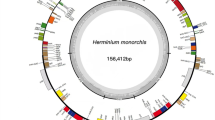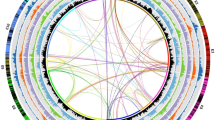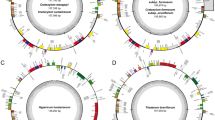Abstract
PHOTOMETRIC analysis of the deoxyribonucleic acid content of nuclei would afford an interesting approach to the problems connected with polyploidy, polyteny and endomitosis, our knowledge of which is still fragmentary. It would also help us to understand the evolutionary processes and trace the relationships of species. If, in accordance with the hypothesis of deoxyribonucleic acid constancy, there is a strict correlation between the deoxyribonucleic acid content and the number of chromosomes, or more exactly the number of chromonemata, measurement of deoxyribonucleic acid would be the easiest way of studying polyploidy, polyteny and endomitosis, particularly in the interphase or prophase nuclei where the chromosome numbers cannot be counted. Evolutionary processes involving polyploidization from one species to another close one can be traced by means of photometric analysis, as the deoxyribonucleic acid content of the sperm or of the normal diploid nucleus appears to be characteristic of a species. The utilization of deoxyribonucleic acid content in problems of evolution is well illustrated by Hughes-Schrader's1 work on a number of closely related species of mantids the karyotypes of which are not analysable by the usual methods of comparative cytology. The deoxyribonucleic acid content of the spermatids of two species, one having twice the number of chromosomes as the other, was the same, agreeing well with cytological studies which led to the conclusion that redistribution of chromosomal material rather than polyploidy was involved in the evolution of these species. On the other hand, in two other close species the deoxyribonucleic acid ratio of the spermatids was very near 1 : 2, indicating that polyploidy had played a part in their evolution.
This is a preview of subscription content, access via your institution
Access options
Subscribe to this journal
Receive 51 print issues and online access
$199.00 per year
only $3.90 per issue
Buy this article
- Purchase on Springer Link
- Instant access to full article PDF
Prices may be subject to local taxes which are calculated during checkout
Similar content being viewed by others
References
Hughes-Schrader, S., Biol. Bull., 100, 178 (1951).
Huskins, C. L., and Steinitz, L. M., J. Heredity, 39, 35 (1948).
Patau, K., Chromosoma, 5, 341 (1952a).
Patau, K., Rec. Gen. Soc. Amer., 21, 56 (1952b).
Patau, K., and Swift, H., Chromosoma, 6, 149 (1953).
Srinivasachar, D., Ph.D. thesis, University of Wisconsin (1953).
Author information
Authors and Affiliations
Rights and permissions
About this article
Cite this article
SRINIVASACHAR, D. Nuclear Deoxyribonucleic Acid Content and Endopolyploidy in the Meristem of Onion Roots. Nature 184, BA80–BA81 (1959). https://doi.org/10.1038/184080a0
Issue Date:
DOI: https://doi.org/10.1038/184080a0
Comments
By submitting a comment you agree to abide by our Terms and Community Guidelines. If you find something abusive or that does not comply with our terms or guidelines please flag it as inappropriate.



